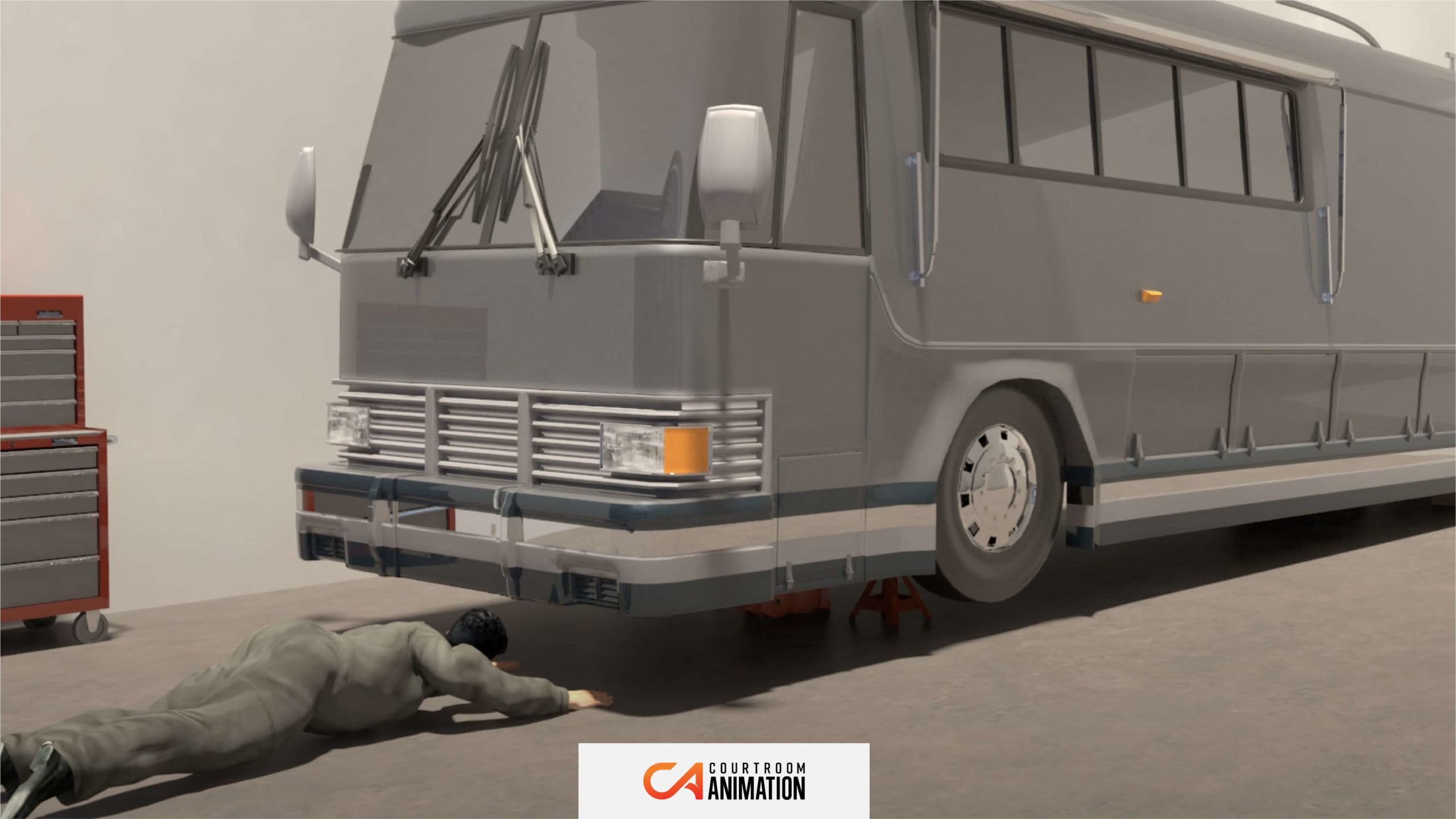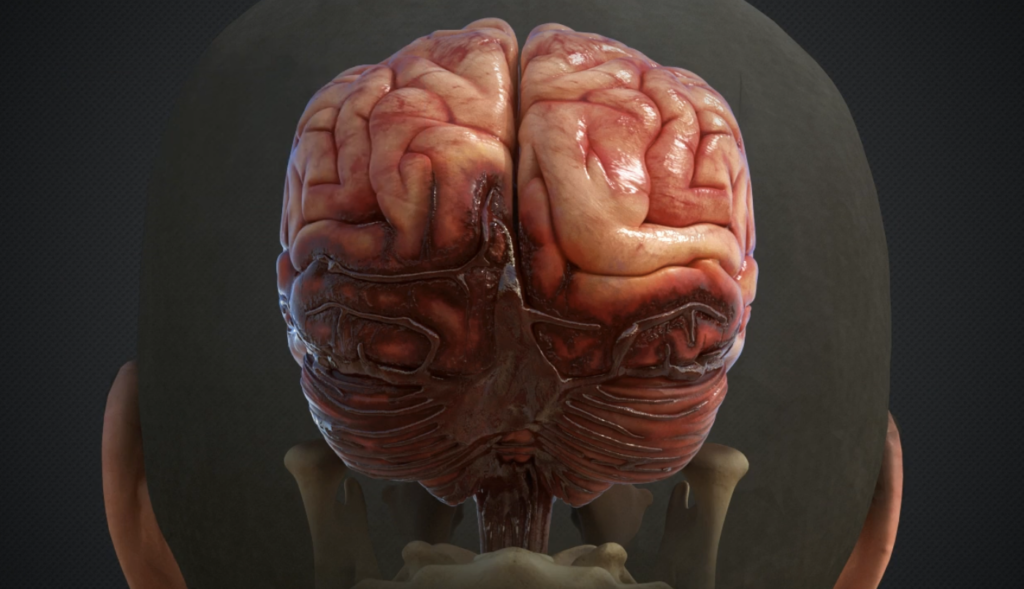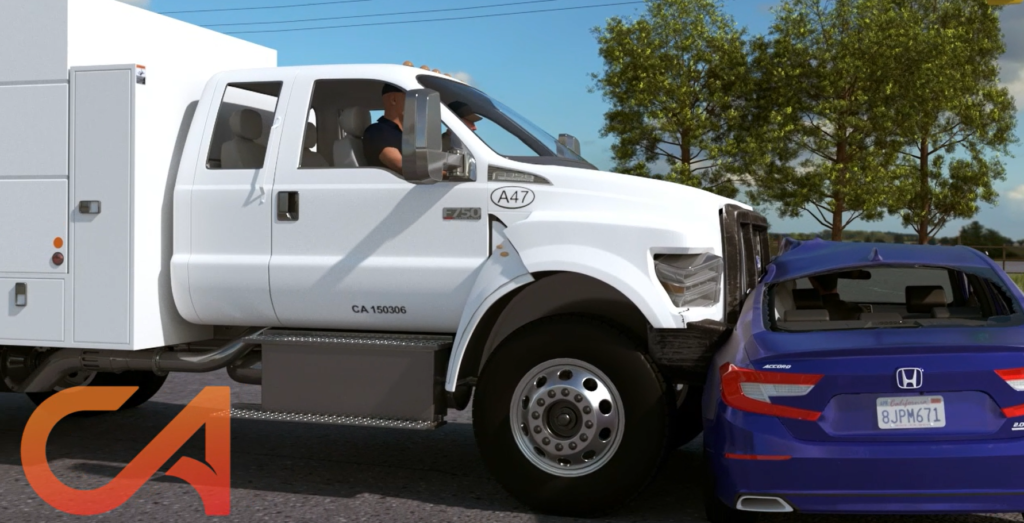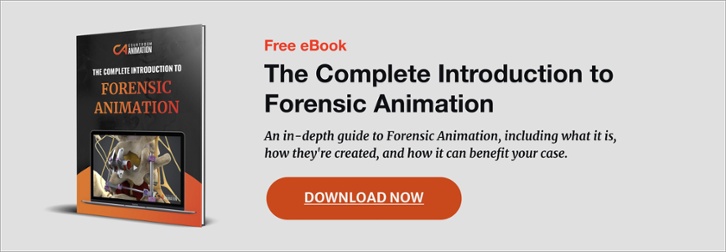
Legal admissibility for visuals, like forensic animations, is never a sure thing in litigation. Some attorneys take the path of least resistance and either don’t leverage any visuals, or leverage a PowerPoint presentation to get their main facts across.
While using PowerPoint is a successful way to explain your case to the jury, many attorneys are eager to grow their trial presentation techniques. This usually increases the chances that they receive a favorable case outcome. One way they do this is to use the latest legal technology – such as legal animations – to impress the jury or reach a faster settlement.
While the legal admissibility of such visuals is not always a guarantee, when done right, they are 99% likely to be allowed in court. However, there are questions about general admissibility and whether or not there are differences between trial ready and mediation ready exhibits. That’s why we’ve compiled the answers to the five most common questions about admissibility regarding legal visuals:
- What’s the difference between real and demonstrative evidence?
- Are animations less admissible than legal graphics or charts?
- What goes into ensuring a visual is admissible?
- Can the opposing counsel dispel my visuals?
- Have the rules of admissibility changed in recent years?
If you have ever wondered what factors contribute towards the admissibility of demonstrative evidence, we have the answers.
1: What’s the difference between real and demonstrative evidence?
This first question is one of the most important ones regarding admissibility in litigation. But before we dive into what real evidence is, let’s answer the question, what is demonstrative evidence?

Example of Admissible Medical Graphic from Courtroom Animation
Demonstrative evidence can be any models, copies of reports, photographs, video recordings, forensic animations, or other devices used in a trial or mediation discussions to support facts that the party is trying to establish. In litigation, demonstrative evidence usually visualizes expert testimony or depositions, a plaintiff or defense’s viewpoint, or recreates an incident using physical data.
Real evidence differs from demonstrative evidence because it encompasses physical evidence that was used directly in the case. For example, a weapon or a mechanical gear that broke down.
2: Are animations less admissible than legal graphics or charts?
While an animation might require more time for a judge or expert to review than a legal graphic, it is not necessarily less admissible than the latter. If your expert(s), whether a medical professional or an accident reconstructionist, has time to verify the visual, then it has a higher chance of being admitted.
Demonstrative evidence is a powerful story-telling tool for attorneys. If you want to use a trial exhibit for your case, make sure to add it to the exhibit list well in advance of the trial date.
“If you can build your topic into a storyline, you will make it more memorable for your audience (and yourself). If you are using slides and can align your graphics and content with the theme, all the better (also a few animations never hurt anyone).”
Sofia Lingos, Managing Attorney at Trident Legal Business Law Services, “The Art of Presentation”
Even one visual can be a game-changer for your case.
3: What goes into ensuring a visual is admissible?
First, the judge must determine if the proposed evidence is an animation or a simulation, which carry different standards of admissibility. Referring to an animation as a simulation is inaccurate, and can cause confusion when working with these tools.
A simulation has less legal admissibility than demonstrative evidence because they create new conclusions based on data, instead of reinforcing depositions or testimony. Whether a simulation or an animation, two of the most common reasons a judge might not admit evidence is:
- It is technically hearsay.
- It has not been properly authenticated.
To ensure your demonstrative evidence is admissible, collaborate with an experienced forensic animation studio that will ensure it is based on real-life data. For example, a medical animation cannot have too much unnecessary blood or be dramatized. Follow these steps to ensure your visual is admissible:
- Share your visuals with the opposing counsel
- Consult your expert(s) to ensure accuracy
- Receive feedback from the opposing counsel’s expert(s), if applicable
- Have your witnesses reinforce the accuracy
- Put your visual on the exhibition list as soon as possible
- Revise the visuals with any feedback and resubmit ASAP
4: Can the opposing counsel dispel my visuals?
The short answer is, yes. However, their arguments must be based in fact and prove that your visual does not uphold legal admissibility standards.
Both defense and plaintiff counsels are allowed to use visuals such as legal graphics, animations, etc. in trial or mediation, and both counsels can try to dispel them. For example, many attorneys with high-profile cases use evidence animation as a way to strengthen their case in court.
Want to use demonstrative evidence in your opening or closing statements, but unsure how much an animation can cost? Download our free pricing guide!
Attorneys can use legal graphics or videos in any stage of litigation – not just in trial.
In fact, one initial settlement offer went from $450K to $1 million after the defense saw the plaintiff’s accident reconstruction animation. That one visual provided an over 20x return on the investment of the animation alone!

Example of Admissible Car Crash Animation Still from Courtroom Animation
If you want to ensure your graphics or legal videos are admissible, read this short article, “5 Ways to Ensure Your Legal Animation is Admissible in Court.” It covers how attorneys can ensure the opposing counsel has a chance to review the visuals before the mediation discussions or trial begins.
5: Have the rules of admissibility changed in recent years?
Since the Federal Rules of Evidence was adopted in 1975, the rules regarding demonstrative evidence have not changed. Federal Rules of Evidence 611 and 1006 are the two rules that outline the admission of demonstrative exhibits at the federal level:
- “The summarized material must be “voluminous” and not conveniently subject to examination in court.
- The summary or chart must be an accurate compilation of the voluminous records.
- The records summarized must be otherwise admissible into evidence.
- The underlying documents must be made available to the opposing party for examination and copying.”
The purpose of the Federal Rules of Evidence was to regulate what the jury was able to see and use in order to reach a final verdict. At the signing of the law, many states revised their own evidence rules to follow the federal law.
With legal technology becoming more and more advanced, perhaps a new law might be enacted that further categorizes what demonstrative evidence is. When that happens, we’ll do another deep dive to answer any new questions about legal admissibility regulations.
Become the Legal Admissibility Expert for Your Case’s Visuals
Litigation animation, when used as demonstrative evidence, has a greater likelihood of having a memorable impact on the jury. It’s not the same as real evidence, which are usually physical objects.
Determining if your demonstrative evidence is admissible in court is relatively straightforward. For legal admissibility, the visual must represent the facts of a case accurately and avoid being overly prejudicial. This is true whether in mediation or in trial.
A key guideline to remember is that a chart or timeline is not more or less admissible than a forensic animation. All demonstrative evidence should be sent to all relevant parties ahead of time to make sure the visuals can be revised, if needed.
Have more questions about the legal admissibility for a piece of evidence for your case? Bookmark our guide on legal graphics, or download the eBook below for more information about forensic animation admissibility.
